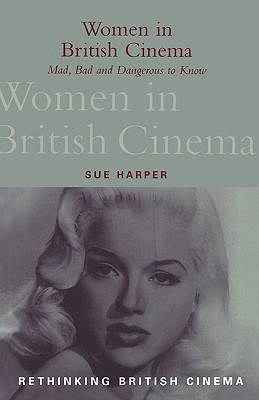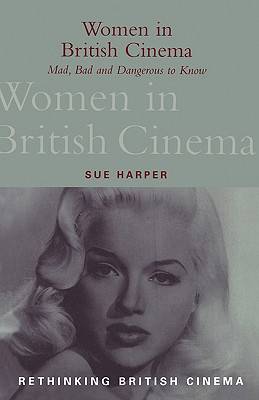
Je cadeautjes zeker op tijd in huis hebben voor de feestdagen? Kom langs in onze winkels en vind het perfecte geschenk!
- Afhalen na 1 uur in een winkel met voorraad
- Gratis thuislevering in België vanaf € 30
- Ruim aanbod met 7 miljoen producten
Je cadeautjes zeker op tijd in huis hebben voor de feestdagen? Kom langs in onze winkels en vind het perfecte geschenk!
- Afhalen na 1 uur in een winkel met voorraad
- Gratis thuislevering in België vanaf € 30
- Ruim aanbod met 7 miljoen producten
Zoeken
Omschrijving
This book takes a broad perspective and analyses the ways in which the British film industry has dealt with women and their creativity from 1930 to the present. The first part of the book deals comprehensively with different historical periods in British film culture, showing how the 'agency' of production company, director, distribution company or scriptwriter can bring about new patterns of female stereotyping. The second part looks at the input of women workers into the film process. It assesses the work of women in a variety of roles: directors such as Wendy Toye and Sally Potter, producers such as Betty Box, scriptwriters such as Clemence Dane and Muriel Box, costume designers such as Shirley Russell and Jocelyn Rickards, and editors and art directors. This is a polemical book which is written in a lively and often confrontational manner. It uses fresh archival material and takes energetic issue with those explanatory models of film analysis which impose easy answers onto complex material.
Specificaties
Betrokkenen
- Auteur(s):
- Uitgeverij:
Inhoud
- Aantal bladzijden:
- 272
- Taal:
- Engels
- Reeks:
Eigenschappen
- Productcode (EAN):
- 9780826447333
- Verschijningsdatum:
- 14/09/2000
- Uitvoering:
- Paperback
- Formaat:
- Trade paperback (VS)
- Afmetingen:
- 136 mm x 215 mm
- Gewicht:
- 317 g

Alleen bij Standaard Boekhandel
+ 271 punten op je klantenkaart van Standaard Boekhandel
Beoordelingen
We publiceren alleen reviews die voldoen aan de voorwaarden voor reviews. Bekijk onze voorwaarden voor reviews.









